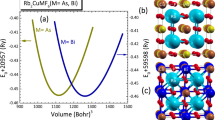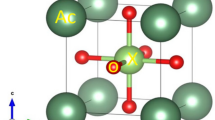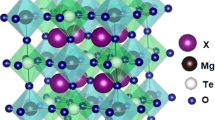Abstract
The present study focuses on the thermo-mechanical modelling of pristine graphyne, BN-substituted graphyne, and graphyne-like BN utilizing molecular dynamics (MD) simulation. Considering the results of uniaxial tensile MD simulations, respective structures indicate outstanding mechanical properties. In particular, the pristine graphyne (note that it only consists of C–C atomic bond type) has superior mechanical properties compared to others. Besides, graphyne-like BN demonstrates the lowest mechanical properties due to consisting of only B–N bonds. MD simulations are conducted for different temperatures and strain rates varying between 1 K–1200 K and 107 s−1–109 s−1, respectively. With increasing temperature, a gradual decrease in mechanical properties is observed due to the high temperature’s weakening effect. Mechanical properties of graphyne-like BN are affected by the change in temperature more than other structures. Furthermore, findings of MD simulation show that the mechanical properties of aforementioned structures have an increasing trend with increasing strain rates. Similar to mechanical properties, pristine graphyne, BN-substituted graphyne, and graphyne-like BN have superior thermal conductivity (TC) properties. Non-equilibrium MD simulation results illustrate that the pristine graphyne containing C–C bonds exhibits the largest TC value. In contrary, the graphyne-like BN comes up with a low TC value. Temperature increase (from 200 to 900 K) affects TC values negatively owing to increase in phonon–phonon scattering. Finally, the results of this study make aforementioned structures a splendid competitor for thermo-mechanical practice of 2D-based structures.
Graphical Abstract









Similar content being viewed by others
Data availability
The datasets generated during and/or analysed during the current study are available from the corresponding author on reasonable request.
Code availability
N/A.
References
Katsnelson MI (2007) Graphene: carbon in two dimensions. Mater Today 10(1–2):20–27
Zhou J, Sun Q, Wang Q, Jena P (2015) High-temperature superconductivity in heavily N- or B-doped graphene. Phys Rev B 92:064505
Faye JPL, Sahebsara P, Sénéchal D (2015) Chiral triplet superconductivity on the graphene lattice. Phys Rev B 92:085121
Nandkishore R, Chubukov AV (2012) Interplay of superconductivity and spin-density-wave order in doped graphene. Phys Rev B 86:115426
Ludbrook BM, Levy G, Nigge P, Schneider M, Dvorak DJ, Veenstra CN, Zhdanovich S, Wong D, Dosanjh P, Straßer C, Stöhr A, Forti S, Ast CR, Starke U, Damascelli A (2015) Evidence for superconductivity in Li-decorated monolayer graphene. Proc Natl Acad Sci USA 112(38):11795–11799
Park W, Guo Y, Li X, Hu J, Liu L, Ruan X, Chen YP (2015) High-performance thermal interface material based on few-layer graphene composite. J Phys Chem C 119(47):26753–26759
Tan X, Shao H, Hu T, Liu G, Jianga J, Jiang H (2015) High thermoelectric performance in two-dimensional graphyne sheets predicted by first-principles calculations. Phys Chem Chem Phys 17(35):22872–22881
Xiao Y, Wang W, Lin T, Chen X, Zhang Y, Yang J, Wang Y, Zhou Z (2016) Largely enhanced thermal conductivity and high dielectric constant of poly(vinylidene fluoride)/boron nitride composites achieved by adding a few carbon nanotubes. J Phys Chem C 120(12):6344–6355
Hu M, Jing Y, Zhang X (2015) Low thermal conductivity of graphyne nanotubes from molecular dynamics study. Phys Rev B 91:155408
Rinzler AG, Hafner JH, Nikolaev P, Nordlander P, Colbert DT, Smalley RE, Lou L, Kim SG, Tománek D (1995) Unraveling nanotubes: field emission from an atomic wire. Science 269(5230):1550–1553
Li G, Li Y, Qian X, Liu H, Lin H, Chen N, Li Y (2011) Construction of tubular molecule aggregations of graphdiyne for highly efficient field emission. J Phys Chem C 115(6):2611–2615
Li TC, Lu SP (2008) Quantum conductance of graphene nanoribbons with edge defects. Phys Rev B 77:085408
Williams JR, Abanin DA, DiCarlo L, Levitov LS, Marcus CM (2009) Quantum hall conductance of two-terminal graphene devices. Phys Rev B 80:045408
Gan LY, Zhang Q, Guo CS, Schwingenschlögl U, Zhao Y (2016) Two-dimensional MnO2/graphene interface: half-metallicity and quantum anomalous hall state. J Phys Chem C 120(4):2119–2125
Dutta S, Pati SK (2008) Half-metallicity in undoped and boron doped graphene nanoribbons in the presence of semilocal exchange-correlation ınteractions. J Phys Chem B 112(5):1333–1335
Berdiyorov G, Bahlouli H, Peeters FM (2016) Effect of substitutional impurities on the electronic transport properties of graphene. Phys E 84:22–26
Lherbier V, Liang L, Charlier JC, Meunier V (2015) Charge carrier transport and separation in pristine and nitrogen-doped graphene nanowiggle heterostructures. Carbon 95:833–842
Baughman RH, Eckhardt H, Kertesz M (1987) Structure-property predictions for new planar forms of carbon: layered phases containing sp2 and sp atoms. J Chem Phys 87:6687–6699
Wu W, Guo W, Zeng XC (2013) Intrinsic electronic and transport properties of graphyne sheets and nanoribbons. Nanoscale 5(19):9264–9276
Malko D, Neiss C, Vines F, Görling A (2012) Competition for graphene: graphynes with direction-dependent dirac cones. Phys Rev Lett 108:086804
Kang J, Li J, Wu F, Li SS, Xia JB (2011) Elastic, electronic, and optical properties of two-dimensional graphyne sheet. J Phys Chem C 115(42):20466–20470
Narita N, Nagai S, Suzuki S, Nakao K (1998) Optimized geometries and electronic structures of graphyne and its family. Phys Rev B 58:11009–11014
Zhou J, Lv K, Wang Q, Sun Q, Jena P (2011) Electronic structures and bonding of graphyne sheet and its BN analog. J Chem Phys 134:174701–174705
Li Y, Xu L, Liua H, Li Y (2014) Graphdiyne and graphyne: from theoretical predictions to practical construction. Chem Soc Rev 43(8):2572–2586
Singh NB, Bhattacharya B, Sarkar U (2014) A first principle study of pristine and BN-doped graphyne family. Struct Chem 25(6):1695–1710
Sarkar U, Bhattacharya B, Seriani N (2015) First principle study of sodium decorated graphyne. Chem Phys 461:74–80
Hwang HJ, Koo J, Park M, Park N, Kwon Y, Lee H (2013) Multilayer graphynes for lithium ion battery anode. J Phys Chem C 117(14):6919–6923
Tang Q, Zhou Z, Chen Z (2013) Graphene-related nanomaterials: tuning properties by functionalization. Nanoscale 5(11):4541–4583
Lu R, Rao D, Meng Z, Zhang X, Xu G, Liu Y, Kan E, Xiao C, Deng K (2013) Boron-substituted graphyne as a versatile material with high storage capacities of Li and H2: a multiscale theoretical study. Phys Chem Chem Phys 15(38):16120–16126
Liu Y, Liu W, Wang R, Haob L, Jiaob W (2014) Hydrogen storage using Na-decorated graphyne and its boron nitride analog. Int J Hydrogen Energ 39(24):12757–12764
Srinivasu K, Ghosh SK (2012) Graphyne and graphdiyne: promising materials for nanoelectronics and energy storage applications. J Phys Chem C 116(9):5951–5956
Alaghemandi M (2015) Single layer hydrogenated graphyne membrane for selective hydrogen separation: a molecular dynamics simulation study. Chem Phys Lett 629:65–69
Kou J, Zhou X, Lu H, Wu F, Fan J (2014) Graphyne as the membrane for water desalination. Nanoscale 6(3):1865–1870
Bhattacharya B, Singh NB, Sarkar U (2015) Pristine and BN doped graphyne derivatives for UV light protection. Int J Quant Chem 115(13):820–829
Sarma JVN, Chowdhury R, Jayaganthan R (2014) Graphyne-based single electron transistor: ab initio analysis. Nano 9(3):1450032/1–8
Wu P, Du P, Zhang H, Cai C (2015) Graphyne-supported single Fe atom catalysts for CO oxidation. Phys Chem Chem Phys 17(2):1441–1449
Yu H, Du A, Song Y, Searles DJ (2013) Graphyne and graphdiyne: versalite catalysts for dehydrogenation of light metal complex hydrides. J Phys Chem C 117(42):21643–21650
Chen X, Qiao Q, An L, Xia D (2015) Why Do Boron and Nitrogen Doped α- and γ-Graphyne Exhibit Different Oxygen Reduction Mechanism? A First-Principles Study. J Phys Chem C 119(21):11493–11498
Das BK, Sen D, Chattopadhyay KK (2016) Implications of Boron Doping on Electrocatalytic Activities of Graphyne and Graphdiyne Families: A First Principles Study. Phys Chem Chem Phys 18(4):2949–2958
Das BK, Sen D, Chattopadhyay KK (2016) Nitrogen doping in acetylene bonded two dimensional carbon crystals: ab-initio forecast of electrocatalytic activities vis-à-vis boron doping. Carbon 105:330–339
Zhang S, Du H, He J, Huang C, Liu H, Cui G, Li Y (2016) Nitrogen-doped graphdiyne applied for lithium-ion storage. ACS Appl Mater Interfaces 8(13):8467–8473
Bhattacharya B, Sarkar U (2016) The effect of boron and nitrogen doping in electronic, magnetic, and optical properties of graphyne. J Phys Chem C 120(47):26793–26806
Plimpton S (1995) Fast parallel algorithms for short-range molecular dynamics. J Comput Phys 117(1):1–19
Lindsay L, Broido DA (2010) Optimized Tersoff and Brenner empirical potential parameters for lattice dynamics and phonon thermal transport in carbon nanotubes and graphene. Phys Rev B 81(20):205441
Matsunaga K, Fisher C, Matsubara H (2000) Tersoff potential parameters for simulating cubic boron carbonitrides. Jpn J Appl Phys 39:48
Hatam-Lee SM, Rajabpour A, Volz S (2020) Thermal conductivity of graphene polymorphs and compounds: from C3N to graphdiyne lattices. Carbon 161:816–826
Senturk AE, Oktem AS, Konukman AES (2020) The influences of boron doping in various defect sites on the thermo-mechanical properties of armchair graphene nanoribbons. Eur Phys J B 93:121
Senturk AE, Oktem AS, Konukman AES (2019) An investigation on the thermo-mechanical properties of boron-doped C3N4. Appl Phys A 125:53
Senturk AE (2022) Evaluation of the mechanical properties and interfacial thermal resistance of hybrid BC6N–BC2N. Appl Phys A 128:10
Senturk AE (2020) Outstanding thermo-mechanical properties of graphene-like B3C3 and C3N3. Appl Phys A 126:584
Senturk AE (2021) Thermo-mechanical properties of different structures of BC2N. Mol Simulat 47(18):1493–1501
Kınacı A, Haskins JB, Sevik C, Çağın T (2012) Thermal conductivity of BN-C nanostructures. Phys Rev B 86:1–8
Cranford SW, Buehler MJ (2011) Mechanical properties of graphyne. Carbon 49:4111–4121
Mortazavi B (2017) Ultra high stiffness and thermal conductivity of graphene like C3N. Carbon 118:25–34
Mortazavi B, Cuniberti G, Rabczuk T (2015) Mechanical properties and thermal conductivity of graphitic carbon nitride: a molecular dynamics study. Comput Mater Sci 99:285–289
Mortazavi B, Rahaman O, Rabczuk T, Pereira LFC (2016) Thermal conductivity and mechanical properties of nitrogenated holey graphene. Carbon 106:1–8
Chase MW, Davies CA, Downey JR, Frurip DJ, McDonald RA, Syverud AN (1985) JANAF thermochemical tables. J Phys Chem Ref Data 14:535
Zhang YY, Pei QX, Wang CM (2012) A molecular dynamics investigation on thermal conductivity of graphynes. Comput Mater Sci 65:406–410
Senturk AE (2022) Exploring the interfacial thermal resistance and mechanical properties of hybrid C3N–BC3. Appl Phys A 128:8
Author information
Authors and Affiliations
Contributions
Ahmet Emin Senturk: investigation, theoretical calculation, data analysis, writing. Gökçe Akgün: data generation for physical model, writing.
Corresponding author
Ethics declarations
Conflict of interest
The authors declare no competing interests.
Additional information
Publisher's note
Springer Nature remains neutral with regard to jurisdictional claims in published maps and institutional affiliations.
Rights and permissions
Springer Nature or its licensor (e.g. a society or other partner) holds exclusive rights to this article under a publishing agreement with the author(s) or other rightsholder(s); author self-archiving of the accepted manuscript version of this article is solely governed by the terms of such publishing agreement and applicable law.
About this article
Cite this article
Senturk, A.E., Akgün, G. Exploring the thermal conductivity and mechanical properties of BN-doped graphyne. J Mol Model 28, 383 (2022). https://doi.org/10.1007/s00894-022-05379-2
Received:
Accepted:
Published:
DOI: https://doi.org/10.1007/s00894-022-05379-2




